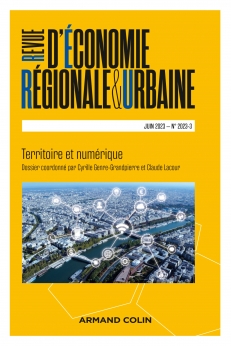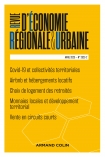
Revue d'économie régionale et urbaine (3/2023)
Pour acheter ce numéro, contactez-nous
Recevez les numéros de l'année en cours et accédez à l'intégralité des articles en ligne.
Résumé En France, la rétraction des services publics s’est accentuée avec la mise en place depuis 2000 de politiques d’austérité budgétaire. Les agences bancaires ont également connu un repli, lié au changement de pratiques des clients et à des impératifs économiques. Dans cette étude, l’objectif est de comparer les logiques de fermetures, entre 2007 et 2017 en région SUD, des antennes de plusieurs types de services publics et des agences bancaires du Crédit Agricole (CA), prises comme exemple de service privé, puis d’en mesurer les impacts sur l’accessibilité. Il s’agit de voir si les fermetures pour les secteurs privé et public suivent les mêmes logiques et impactent les mêmes territoires. Les résultats nuancent fortement les discours sur le « délaissement des territoires » en montrant que les logiques de fermeture diffèrent selon les services et les échelles et que les impacts sur l’accessibilité restent limités.
In France, the shrinkage of public services has been aggravated by budgetary austerity policies since 2000. Bank branches have also experienced a decline, linked to changes in customer practices due to the emergence of online banking and economic imperatives. While this shrinkage of public services has been well studied, this is not the case for bank branches or other private services, especially in a comparative logic. Therefore, in this study, we begin by describing the closures of service points in the Sud region of France between 2007 and 2017 for several types of public services (secondary school, gendarmerie post, maternity hospital, post office) and of Crédit Agricole bank branches, taken as an example of a private service. Then we try to understand their logics, examining the role of demography and of the spatial distribution of the services. Finally, the impact of the closures of the different types of services on accessibility has been measured with a geographical information system, to see if the closures in the private and public sectors impact the same territories. The results strongly qualify the claims regarding a ’territorial abandon’, demonstrating that the spatial logic of closures differs depending on the services (in particular on whether or not they have mandatory spatial access constraints: here gendarmeries and post offices can be contrasted with schools, maternity hospitals and Crédit Agricole) and the scales (the smallest spatial units are not the ones systematically impacted by closures, especially at the inter-municipal level). The impacts of the closures of the various services on accessibility remain low and do not add up locally.

